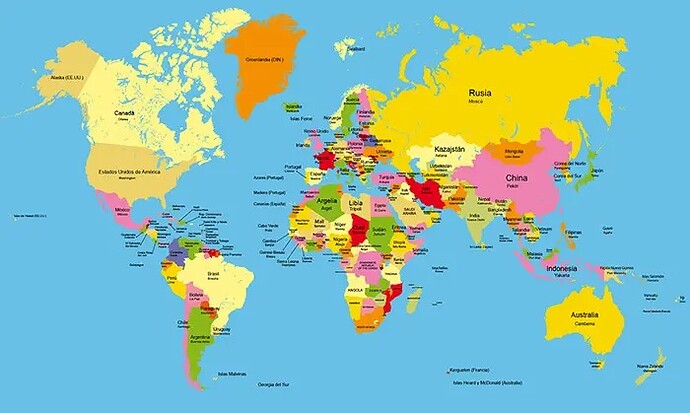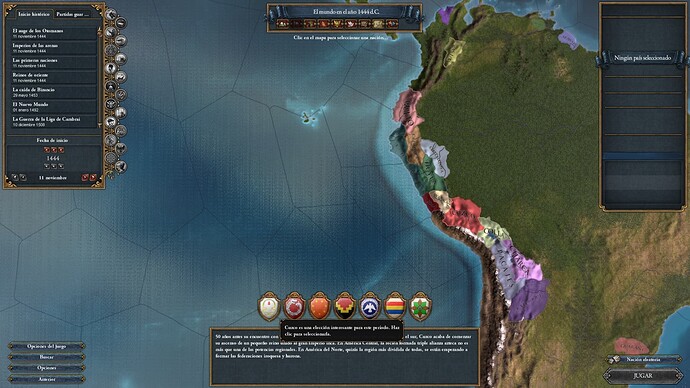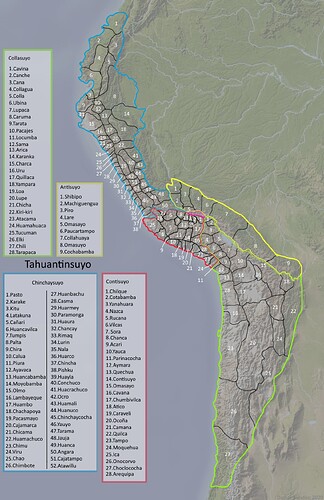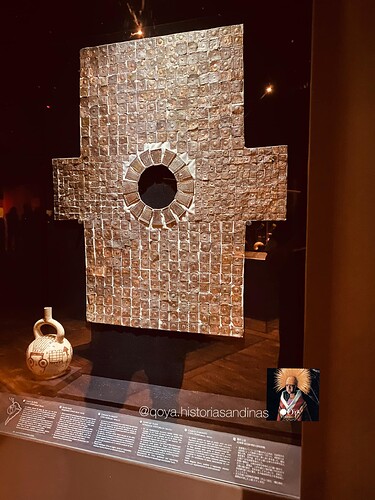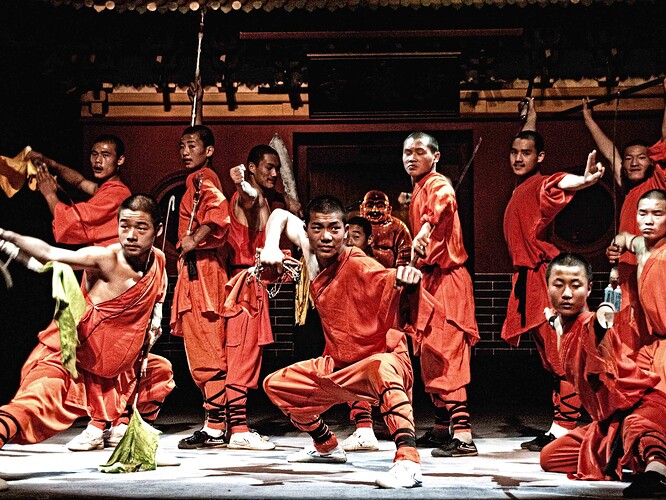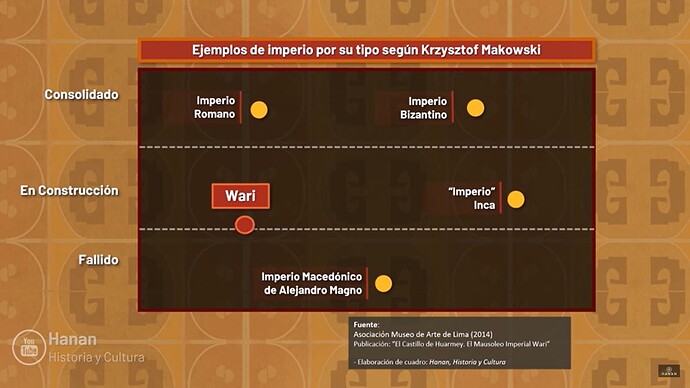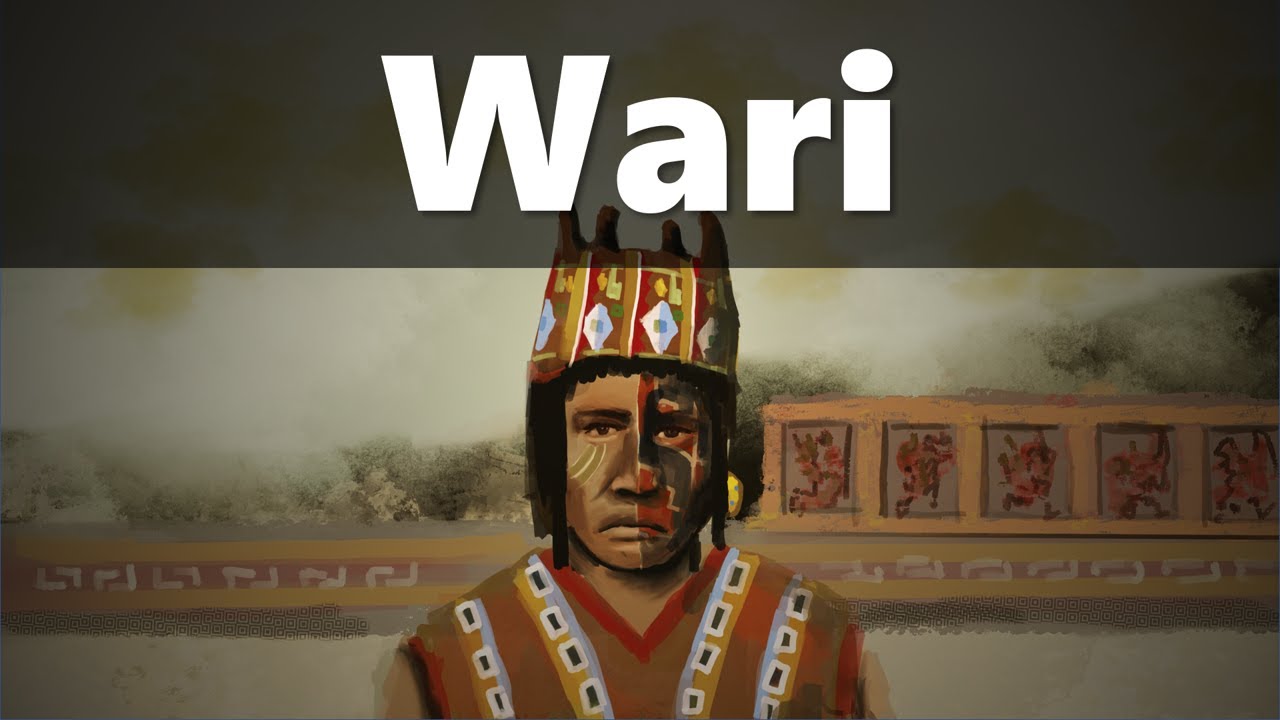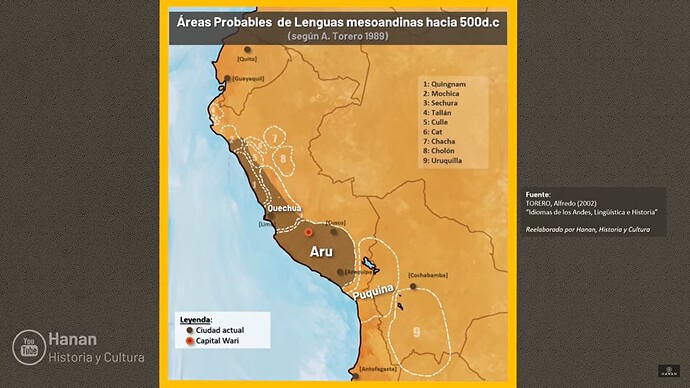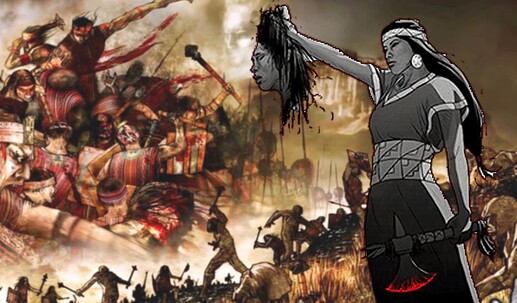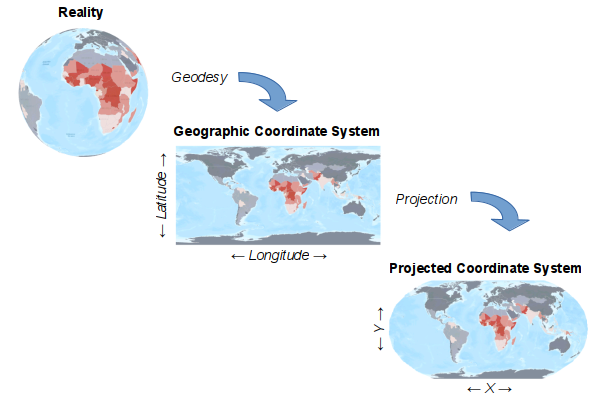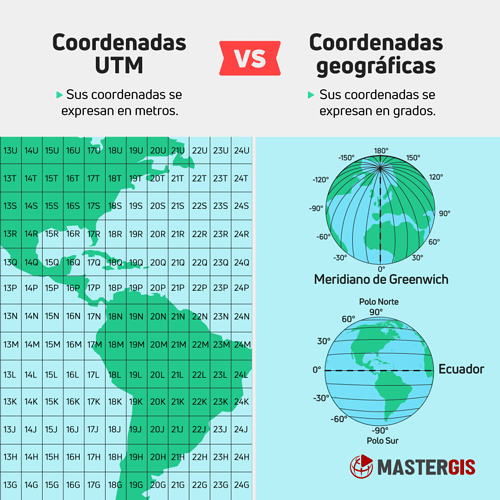*Warning: this is the same post that I published in this topic, I decided to put it in both threads for practical reasons.
Greetings everyone, some time has passed with this topic, however, based on what I have read from some users and the worldview they have of the pre-Columbian world, I feel the need to write here again.
you can skip the intro
I really thought about posting on the AoE forum earlier, but I have to admit I was put off by the June massacre regarding fan bans on social media. However, the AoE saga has given me so many hours of free enjoyment since childhood cough cough, I mean, I have purchased the AoE saga on Steam and it gives me so many hours of current enjoyment that I want to support this community according to my chances. As I mentioned a few years ago, I am not a history expert, but I enjoy reading history books and I know that many times history has been modified for the convenience of the moment.
end of intro
The Chimú and Wari civilizations are Andean, so I will copy exactly the same in the respective themes created by the user @JCC3001.
- Perception of the world geographic area:
I know that many people have grown up studying a Eurocentric world map where Greenland is almost as big as Africa, however, one detail that they do not usually teach is that it is a “modified” map, the regions tend to “shrink” the closer they are to the equator .
How could we translate this? with practical examples:
The “little” South American country called Ecuador is bigger than the whole of the United Kingdom.
Many current European countries can fit within a single South American country.
The area occupied by Germany in 1939 was 633,786 km² and it was considered a great achievement… the area of Colombia is 1,141,748 km².
Probably many users already knew about “actual country sizes”, for those who didn’t know yet they will probably spend a few hours playing around on this page
Taking this into account, then it is already possible to understand the magnitude of all the kingdoms and cultures that the Tawantisuyo was able to have at the time (with an area of 2,500,000 km²).
- Type of Government of the Civilizations.
As I mentioned at some point: “I know that it is impossible to represent all the civilizations in the AoE 2 timeframe but it is feasible to place 3 or 4 representative civilizations”.
The latest expansion of “Dynasties of India” is an excellent reference of what, in my opinion, should be the path that the AoE 2 saga should take, I recently completed all the campaigns and realized that all these new civilizations were EMPIRES that shaped the history of their region (and it goes according to the title Age of EMPIRES), I hope that with this statement you do not think that I am an “elitist” person or that I despise other civilizations with “less advanced” forms of government; I am an admirer of the Jíbaros civilization and I believe that they could contribute a lot in AoE 3 and it is because, although their civilization did not develop beyond a tribal confederation, they demonstrated that it is possible to surpass more technologically and governmentally advanced civilizations such as the Incas and Spanish, however, it must be admitted that their influence did not have a great impact on the AoE 2 timeframe and its greatest relevance was during the AoE 3 timeframe.
So my conclusion from this point is that there are still many civilizations to explore on all continents in the AoE 2 timeframe. Although there are games where hundreds of civilizations can be integrated such as Europe Universalis IV (its base weight is 4 GB ), in games like AoE 2 (its weight is already around 12 GB) it has a greater artistic section where each added civilization is the result of months of planning and work, in addition to the fact that there is probably a maximum of civilizations that can be placed in this game.
This expression is just my personal opinion: in AoE 2 the EMPIRES that still need to be added in the Age of EMPIRES 2 timeframe should be considered.
- Chimú Empire:
Many interesting ideas of how the mechanics of these civilizations would be in a hypothetical addition to AoE 2 have already been proposed in these posts, so I could only polish some details:
Difference in Moche Armor and Chimú Armor:
Although the armor recovered through archeology is mainly of nobles and priests, it can be seen that the Chimú “evolved” the style of their armor with respect to their Moche ancestors, their most characteristic feature is that the Moche armor has finishes smooth, while Chimú armor has an ornate finish (and not to mention that in Chimú times it was common for officials and nobles to wear gold and silver-plated bronze armor).
-
Moche/Mochica

-
Chimú
The Chimú have the characteristic of being a civilization of armored, naval and religious infantry; These are 3 game mechanics that could amply compensate for the lack of cavalry in American civilizations, but how to translate these 3 characteristics into game mechanics?:
-The Chimú UU (castle) could be an armored soldier.
-The Chimú UU (dock) could be a boat or raft.
This has already been studied in this post, but how could it be shown that the Chimú were a Theocracy?
Some time ago I came up with an idea for the UU of a hypothetical Tibetan civilization.
Taking the idea from the Ratha, a Monk could be designed that could alternate between healing/converting and attacking melee. As shown in this post the Chimú also had “Warrior Priests” that attacked from a distance, so the Chimú could have a third Unique Unit to replace the Traditional Priests; this unit could be called “Quich”, benefit from blacksmith upgrades, have Trample damage, and could be toggled between heal/convert and attack via a button; obviously this Priest would be much more expensive and with more training (this would be a double-edged sword since investing in these Priests could greatly affect the economy in the early game).

It should be noted that in the Andean region during the AoE 2 timeframe there were different forms of government, among which the following stand out:
Chimú Empire: Theocracy.
Inca Empire: Diarchy.
Possible Chimú campaign:
In this post all the possible campaigns have already been mentioned, and I would only narrate the story that is told in the current Cajamarca - Peru:
It is known that there was an alliance between the kingdom of Cajamarca and the Chimú Empire (Proof of this, pieces from Cajamarca have been found in Chimú tombs and vice versa). During the Inca invasion the king of Cajamarca was called CUISMANCU (even sometimes the kingdom of cajamarca is referred to as the “Kingdom of Cuismancu”). The exact date of the conquest of the kingdom of Cajamarca is not known: Cieza de León indicates that it would have been in 1456 and Cabello de Balboa indicates the year 1461, in any case the Chimú Empire sent its army to support the kingdom of Cajamarca; It is not known how many troops the Chimú sent to the aid of Cajamarca nor how many troops Cajamarca had when it tried to repel the invasion,in all the bibliographical sources that I managed to find, it only mentions that “they gave a hard battle against the Incas” and that “the Chimús sent a division”, it is known that “military division” in Andean terms is equivalent to 10,000 soldiers so it is a probable number, it also mentions that King Cuismancu did everything possible to match the army of Cajamarca with the same number of soldiers that his Chimú ally had sent, for which the army of Cajamarca could also have been made up of 10,000 soldiers, unfortunately for now it is not possible to know the number of soldiers that faced the Inca army during the invasion of Cajamarca, they could be less or could be many more (because of their military and dual administration, it was the tradition of the Incas to form armies of at least 20,000 so ldados, it is also a possibility that the Chimús actually sent 20,000 soldiers to help Cajamarca). The conquest was long and hard, the Inca general who led the invasion was Cápac Yupanqui who managed to defeat the Chimú-Cajamarca alliance, killing King Cuismancu himself in combat; However, this invasion had not been authorized by Pachacútec and this invasion caused discomfort throughout the Inca empire (probably due to the casualties suffered) for which Pachacútec ordered the execution of Cápac Yupanqui. If you want to know more details about the kingdom of Cajamarca or about this war, I leave you these links (Spanish) 1, 2, 3.
The Chimú empire was the last to be conquered by the Incas:
This is probably just a legend and unfortunately I don’t remember where I read this, but supposedly after the Incas conquered the Kingdom of Cajamarca and seeing that the Chimú were still too powerful for open war (even taking into account that the Chimú have lost part of their army by sending them to help Cajamarca), the Incas decided to conquer a more accessible rival such as the Kingdom of Quito, once this kingdom was conquered they could begin the conquest of the Chimú Empire on two simultaneous fronts from the north and the south suffocating the Chimú efforts until their final surrender.
The most common map of the Inca expansion is the following::
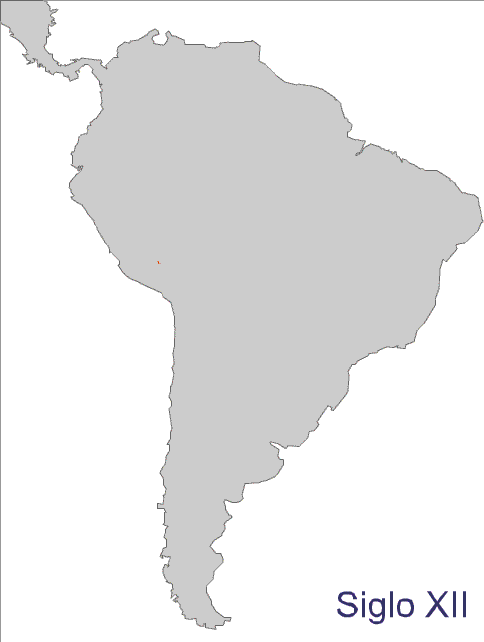
However, there is also this map where they place the Chimú Empire as the last to be conquered by the Incas, for now the only evidence is oral traditions and perhaps in some future archeology will help to discover the truth.
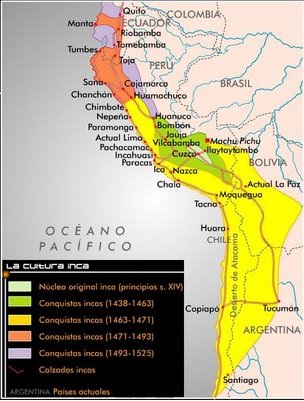
Regarding the Chimú I would also like to add that as a UU (castle) I like this concept and if you are interested in the Chimú Empire I recommend this page (spanish).
- Wari Empire:
It is known that the Wari Empire was the first empire in the Americas and that it was a highly warmongering empire, however, due to the lack of written and/or oral records (that I know of) the names of its rulers and the record of their campaigns military have been lost, however, this is what is known thanks to archaeology, traditions, genetic studies and environmental studies:
- Their direct descendants are the Chankas, the rivals of the Incas who fought for control of the Central Andes.
- It was a bellicose empire that conquered all the neighboring kingdoms, being rivaled only by the Tiwanaku Empire (in the end the Tiwanaku-Wari Empire was formed).
- They had highly developed technological advances for the time, not only regionally but also worldwide: they are the original creators of the Qhapaq Ñan or road system of the Andes (which the Incas would later reuse and expand) and the original inventors of the platform systems (andenes) . They knew the bronze that they also used as weapons and armor, the homonymous capital of the Wari Empire possessed at its height more than 50,000 inhabitants (double the number of Paris than at that time).

An Empire that disappeared out of nowhere may sound like a story about aliens or from the Lovecraft universe, however, as already explained in this post, it is likely that the war against the Mochica (ancestors of the Chimú) has been expensive for them and that is why Great political, economic and social instability followed due to the poor foundation of the Empire’s foundations and a scourge of consecutive natural disasters. The interesting thing is that their most direct genetic descendants are the Chankas.
For more information you can watch this video (Spanish)
Kingdom of the Chankas:
The book that has captivated me the most about the kingdom of the Chankas is the book by Waldemar Espinoza Soriano, it has a large compilation of chronicles and fits them in a good way. The most interesting facts of this book have already been published in this post, so I will only add some details of the Chanka-Inca war:
- According to history, the Chanka kingdom was at its height and expansion with borders so far away that they had contacted the Guaraní (indigenous peoples living in Paraguay), that would explain why in Inca imperial times the most spoken language in the region of present-day Bolivia was the Aymara which was the language spoken by the Chanka and Wari.
(Map of the hypothetical linguistic distribution in the Wari imperial era, the language “Aru” is predecessor of Aymara).
The Chanka army was made up of “3 divisions”, at the time of attacking Cuzco for the first time only one division was used, however the general Chanka Anco Huallo, seeing the fury and determination of the prince Cusi Yupanqui (Pachacútec) when defending the city, made a truce agreement to better prepare their armies, so Cuzco (Incas) had time to reinforce their armies with mercenaries (Canas and Canchis) and improve their defensive structures while the Chankas gathered the 3 divisions of their army for a final attack, once the truce ended, the Battle of Yahuarpampa would continue; In this battle, tens of thousands of soldiers fought on each side. When the Chankas entered the city, the “urban war” began (this is where the events of the Chanan Cori Coca story occur).
As is known, Cuzco (Incas) repels the Chanka invasion and begins a period of uninterrupted expansion. It is also known that a Chanka division (composed of 6,000 Chanka elite soldiers) is used for the Inca conquests and they obtain several victories, however and for some reason a group of Inca nobles conspire against the Chanka division, the sister of Anco Huallo he finds out about this conspiracy and warns his brother. Anco Huallo decides to flee with his military division to the north (the 6,000 soldiers plus his families), upon learning of his escape, the Incas send Cápac Yupanqui to intercept and annihilate Anco Huallo and his men; The Inca army pursued them for several kilometers in the Andes mountain range until losing them, they reached the border of the Kingdom of Cajamarca and Cápac Yupanqui (probably to redeem himself) decided to invade Cajamarca, this began the chain of events already written lines back in the section of the “Possible Chimú Campaign”: the Chimús send part of their army to help their Cajamarcas allies, despite the efforts the Cajamarcas are conquered but as Cápac Yupanqui acted against the orders of Pachacútec he is executed, the invasion of the kingdom of Cajamarca was the trigger of the Chimú-Inca war.
Without further ado and apologizing for my “wall of text”, I hope that those who have read this post have enjoyed reading it as much as I did writing it (I must admit that I did summarize and shorten many parts  )
)
A warm greeting to the AoE community, always be great 
